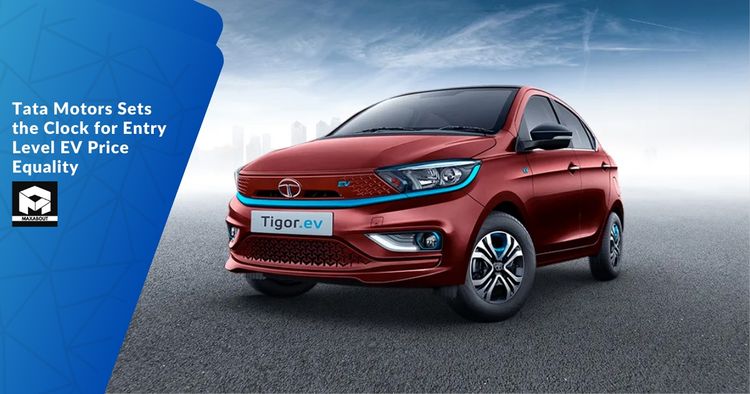Shailesh Chandra, MD of Tata Passenger Electric Mobility, anticipates a significant shift in the pricing dynamics of electric vehicles (EVs) and internal combustion engine (ICE) vehicles within the next 18 months. The decreasing cost of lithium-ion batteries and favorable GST rates could pave the way for mass-market EVs with competitive pricing compared to their ICE counterparts.
Current Price Disparity:
- Premium Pricing: Presently, EVs are priced approximately 25-35 percent higher than their ICE counterparts, deterring mainstream buyers from embracing electric mobility.
- Consumer Expectations: While early EV adopters are willing to pay a premium of 20-30 percent, the broader market demands parity in pricing with traditional ICE vehicles.
Future Price Alignment:
- Battery Cost Decline: With lithium-ion battery costs reaching a record low of around 0 per kilowatt-hour, there's a promising prospect of a mass-market EV with a practical range of 250km matching the price of ICE vehicles in the coming 18 months.
- Market Dynamics: Chandra believes that mainstream buyers will witness the realization of EVs at the same price point as ICE vehicles within a year and a half.
Price Trends for ICE and EV:
- Inflationary vs. Deflationary: Chandra highlights a future cost trend where the cost of internal combustion engines will follow an inflationary trajectory to meet future emissions compliance. In contrast, EVs are expected to experience a deflationary trend, primarily due to falling battery costs.
- LFP Battery Packs: The affordability of EVs is further enhanced by the declining costs of Lithium Iron Phosphate (LFP) battery packs, supported by lower raw material expenses and increased lithium production capacity.
Factors Influencing Cost Reduction:
- Raw Material Costs: Decreased costs of raw materials, particularly for LFP battery packs, contribute to the reduction in overall battery expenses.
- Lithium Production: The surge in lithium production capacity globally, coupled with a slowdown in the growth rate of EVs, has a positive impact on battery costs.
Tata Motors' Strategic Moves:
- Market Dominance: Tata Motors currently commands over 85 percent of the Indian EV market, playing a pivotal role in its growth.
- Investment Commitment: The automaker has committed USD 2 billion (approximately Rs 16,600 crore) in investments for its EV business, underscoring its dedication to the electric mobility sector.
- Product Portfolio: Tata Motors aims to build a portfolio of 10 electric vehicles by 2025, reflecting a strategic approach to cater to diverse market segments.
- Sales Projection: With EVs contributing to about 15 percent of total sales, Tata Motors envisions EVs comprising 30 percent of its total volumes by 2025.
As Tata Motors continues to lead the charge in the Indian EV landscape, the convergence of EV and ICE vehicle prices is anticipated to reshape the market dynamics. With a commitment to innovation, investment, and an evolving product portfolio, Tata Motors aims to drive the widespread adoption of electric mobility in India. The next 18 months are poised to witness a transformative shift, bringing affordability and competitiveness to the forefront of the electric vehicle revolution.

